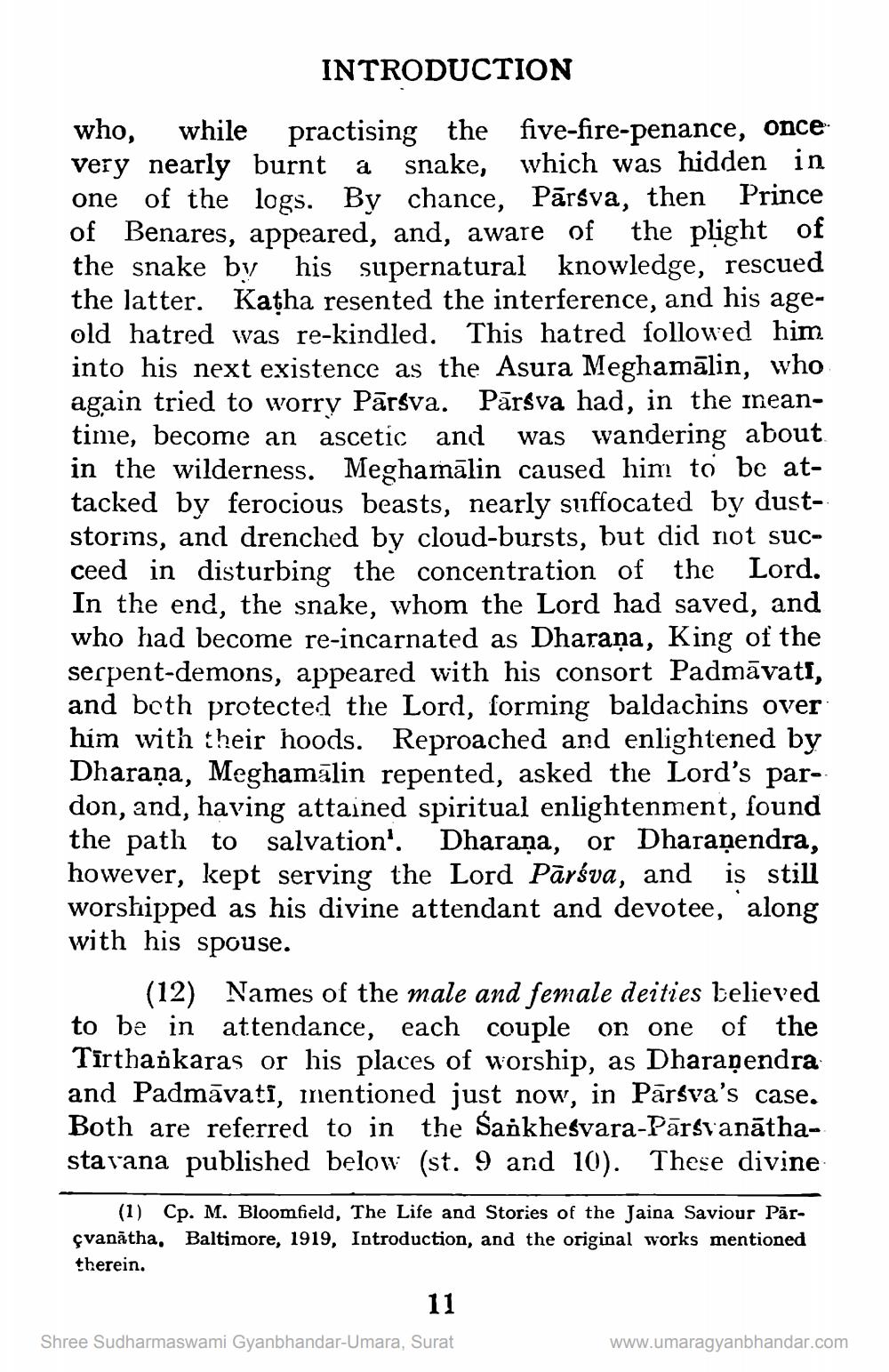________________
INTRODUCTION who, while practising the five-fire-penance, once very nearly burnt a snake, which was hidden in one of the logs. By chance, Pārsva, then Prince of Benares, appeared, and, aware of the plight of the snake by his supernatural knowledge, rescued the latter. Katha resented the interference, and his ageold hatred was re-kindled. This hatred followed him into his next existence as the Asura Meghamālin, who again tried to worry Pārsva. Pārsva had, in the meantime, become an ascetic and was wandering about in the wilderness. Meghamālin caused him to be attacked by ferocious beasts, nearly suffocated by duststorins, and drenched by cloud-bursts, but did not succeed in disturbing the concentration of the Lord. In the end, the snake, whom the Lord had saved, and who had become re-incarnated as Dharana, King of the serpent-demons, appeared with his consort Padmāvati, and both protected the Lord, forming baldachins over him with their hoods. Reproached and enlightened by Dharaṇa, Meghamalin repented, asked the Lord's pardon, and, having attained spiritual enlightenment, found the path to salvation'. Dharana, or Dharaṇendra, however, kept serving the Lord Pārsva, and is still worshipped as his divine attendant and devotee, along with his spouse.
(12) Names of the male and female deities believed to be in attendance, each couple on one of the Tīrthańkaras or his places of Worship, as Dharanendra and Padmāvati, mentioned just now, in Pārsva's case. Both are referred to in the Sankhesvara-Pārsvanāthasta vana published below (st. 9 and 10). These divine
(1) Cp. M. Bloomfield, The Life and Stories of the Jaina Saviour Pārçvanātha, Baltimore, 1919, Introduction, and the original works mentioned therein.
11
Shree Sudharmaswami Gyanbhandar-Umara, Surat
www.umaragyanbhandar.com




